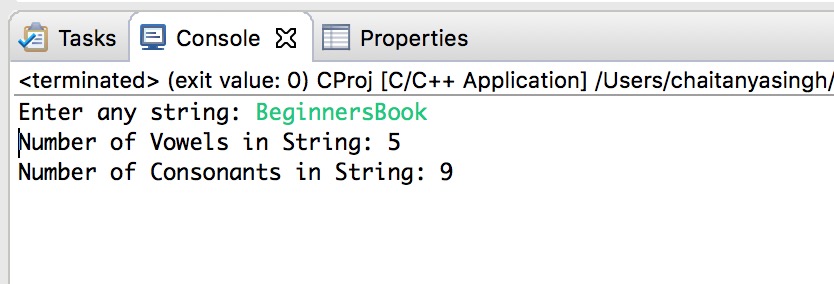As we will see, the ability for an external source to control the internal function of a printf function can lead to some serious potential security vulnerabilities. If a program exists that contains such a bug and returns the formatted string to the user , attackers can read possibly sensitive memory contents. Memory can also be written to through malicious format strings by using the obscure format specifier %n.
The purpose of the %n token is to allow programmers to obtain the number of characters output at predetermined points during string formatting. How attackers can exploit format string vulnerabilities will be explained in detail as we work toward developing a functional format string exploit. The printf function will then convert the binary value to a character representation based on the format specifier and include it as part of the formatted output string.
As will be demonstrated, this occurs regardless of whether the programmer has actually passed a second argument to the printf function or not. Method Description charAt, charCodeAt, codePointAt Return the character or character code at the specified position in string. IndexOf, lastIndexOf Return the position of specified substring in the string or last position of specified substring, respectively. StartsWith, endsWith, includes Returns whether or not the string starts, ends or contains a specified string.
Concat Combines the text of two strings and returns a new string. FromCharCode, fromCodePoint Constructs a string from the specified sequence of Unicode values. This is a method of the String class, not a String instance.
Split Splits a String object into an array of strings by separating the string into substrings. Slice Extracts a section of a string and returns a new string. Substring, substr Return the specified subset of the string, either by specifying the start and end indexes or the start index and a length. Match, matchAll, replace, replaceAll, search Work with regular expressions. ToLowerCase, toUpperCase Return the string in all lowercase or all uppercase, respectively.
Because the function does not know how many arguments it will receive, they are read from the process stack as the format string is processed based on the data type of each token. In the previous example, a single token representing an integer variable was embedded in the format string. The function expects a variable corresponding to this token to be passed to the printf function as the second argument. On the Intel architecture , arguments to functions are pushed onto the stack before the stack frame is created. When the function references its arguments on these platforms, it references data on the stack beneath the stack frame.
In computer programming, a string is traditionally a sequence of characters, either as a literal constant or as some kind of variable. The latter may allow its elements to be mutated and the length changed, or it may be fixed . String may also denote more general arrays or other sequence data types and structures. Computer programmers often require the ability for their programs to create character strings at runtime. These strings may include variables of a variety of types, the exact number and order of which are not necessarily known to the programmer during development.
The widespread need for flexible string creation and formatting routines naturally lead to the development of the printf family of functions. The printf functions create and output strings formatted at runtime. Additionally, the printf functionality is implemented in other languages . The C language has three standard library functions used to write formatted output to the standard output stream, to a string or to an arbitrary file or stream. The Java equivalent to printf is the Formatter class, along with various convenience methods such as String.format() and System.out.printf(). In fact, many C-style format strings that you might use with printf will work "out of the box" with Java System.out.printf(), as we illustrate below.
In the context of Python 2.x, the use of the word 'string' in this document refers to an object which may either be a regular string or a unicode object. JavaScript's String type is used to represent textual data. It is a set of "elements" of 16-bit unsigned integer values (UTF-16 code units). Each element in the String occupies a position in the String.
The first element is at index 0, the next at index 1, and so on. The length of a String is the number of elements in it. You can create strings using string literals or string objects. We can use both System.out.printf and System.out.formatmethods to format strings in Java.
These two methods write a formatted string to the output stream using the specified format string and arguments. If there are more arguments than format specifiers, the extra arguments are ignored. Because printf-style format strings are interpreted at runtime, rather than validated by the compiler, they can contain errors that result in the wrong strings being created. Format commands are short routines built into many programming languages, that display variables as neat columns of padded or justified words and numbers. Format commands have equivalent functionality in most higher level programming languages . The following the list of specifiers constitute the most common instructions in printf statements.
The printf function in C takes a format string followed by a list of arguments. The format string includes tags that indicate where and how the arguments should be embedded in the resulting output. Formatstr is a format string that specifies how the result should be formatted.
Text in the format string is copied directly to the result, except whereformat specifiers are used. Format specifiers act as placeholders in the string, defining how subsequent function arguments should be formatted and inserted into the result. Sometimes, strings need to be embedded inside a text file that is both human-readable and intended for consumption by a machine. This is needed in, for example, source code of programming languages, or in configuration files. In this case, the NUL character doesn't work well as a terminator since it is normally invisible (non-printable) and is difficult to input via a keyboard.
Storing the string length would also be inconvenient as manual computation and tracking of the length is tedious and error-prone. The following examples show the default btrim() behavior, and what changes when you specify the optional second argument. All the examples bracket the output value with so that you can see any leading or trailing spaces in the btrim() result. By default, the function removes and number of both leading and trailing spaces.
Of course, the real trouble comes when one asks what a character is. The characters that English speakers are familiar with are the letters A, B, C, etc., together with numerals and common punctuation symbols. These characters are standardized together with a mapping to integer values between 0 and 127 by the ASCII standard. The Unicode standard tackles the complexities of what exactly a character is, and is generally accepted as the definitive standard addressing this problem. Julia makes dealing with plain ASCII text simple and efficient, and handling Unicode is as simple and efficient as possible.
In particular, you can write C-style string code to process ASCII strings, and they will work as expected, both in terms of performance and semantics. If such code encounters non-ASCII text, it will gracefully fail with a clear error message, rather than silently introducing corrupt results. When this happens, modifying the code to handle non-ASCII data is straightforward.
Like most other languages, it checks whether the number of arguments matches the number of format specifiers. Again, there is a %n specifier, but it doesn't do what you might expect. For some reason, it will print the appropriate line separator for the platform it's running on. That's confusing if you're coming from C, but you can't expect compatibility with Java's format strings, even though both functions have the same name.
We'll also explain how format strings that contain placeholders for certain types of data can cause serious trouble if they are controlled by an attacker. We would check that the value of AAAAAA is entered into stack as the result. This is because %x format string element is directly passed to printf function and printf function prints the contents of stack by four bytes in hexadecimal. (Note the ampersands.) That quoted string format is also available through %q when applied to a value of type string or []byte.
The alternate format %#q will use backquotes instead if possible. When the print statement is used to print numeric values, awk internally converts the number to a string of characters and prints that string. Awkuses the sprintf function to do this conversion (see the Section 8.1.3 in Chapter 8). The different format specifications are discussed more fully in Section 4.5.2 later in this chapter.
As mentioned previously, a print statement contains a list of items separated by commas. In the output, the items are normally separated by single spaces. However, this doesn't need to be the case; a single space is only the default.
Any string of characters may be used as the output field separator by setting the built-in variable OFS. The initial value of this variable is the string " " -- that is, a single space. Regular expressions, byte array literals, and version number literals, as described below, are some examples of non-standard string literals. Users and packages may also define new non-standard string literals.
Further documentation is given in the Metaprogramming section. The methods discussed above (notably System.out.println() and String.format()) are essentially convenience methods wrapper around an instance of the Java Formatter class. The Formatter class can also be instantiated directly. Into constructor, we pass the file or buffer that the formatted data will be output to, and then call one of its format() methods with the format string and arguments . One of the common task in every program is the printing of output.
We use the output to request input from a user and later display the status/result, computations etc. In C programming there are several functions for printing formatted output. Here we discuss the printf() function, which writes output to the computer monitor. To use the printf() function we must include the stdio library in the source code.
To do this just place the following code at the beginning of your program. The printf() function refers to the family of variable-argument functions. The printf() function doesn't know the amount of data that is pushed and what type it has. If it reads %d%s, then the function should extract one value of the int type and one pointer from the stack.
Since the printf() function doesn't know how many arguments it has been passed, it can look deeper into the stack and print data that have nothing to do with it. It usually causes access violation or printing trash. NaN is greater than any non-NaN elements for double/float type. Null elements will be placed at the end of the returned array.
Since 3.0.0 this function also sorts and returns the array based on the given comparator function. The comparator will take two arguments representing two elements of the array. It returns -1, 0, or 1 as the first element is less than, equal to, or greater than the second element. If the comparator function returns other values , the function will fail and raise an error. For each of Printf,Fprintf and Sprintf there is another pair of functions, for instance Print and Println. These functions do not take a format string but instead generate a default format for each argument.
The Println versions also insert a blank between arguments and append a newline to the output while the Print versions add blanks only if the operand on neither side is a string. The tolower function returns its argument string with all uppercase characters converted to lowercase (see the Section 8.1.3 in Chapter 8). The program builds up a list of command lines, using the mv utility to rename the files. Raw strings without interpolation or unescaping can be expressed with non-standard string literals of the form raw"...". Raw string literals create ordinary String objects which contain the enclosed contents exactly as entered with no interpolation or unescaping.
This is useful for strings which contain code or markup in other languages which use $ or \ as special characters. If you compile this code, and run it, it will simply print 'This is a string.'. As you may have guessed, %s is the placeholder for strings, but there are placeholders for other data types as well, such as integers, floating point numbers or even single characters.
This section describes functions and operators for examining and manipulating string values. Strings in this context include values of the types character, character varying, and text. Unless otherwise noted, all of the functions listed below work on all of these types, but be wary of potential effects of automatic space-padding when using the character type. Some functions also exist natively for the bit-string types. Most programming languages now have a datatype for Unicode strings.
Unicode's preferred byte stream format UTF-8 is designed not to have the problems described above for older multibyte encodings. In our example, an argument was passed to the printf function corresponding to the %i token—the integer variable. The Base10 character representation of the value of this variable was output where the token was placed in the format string. The comma-separated parameters that follow (ie, k, freq) supply the interpreter with the string and the number that will be used in the execution of the printf command.


















































